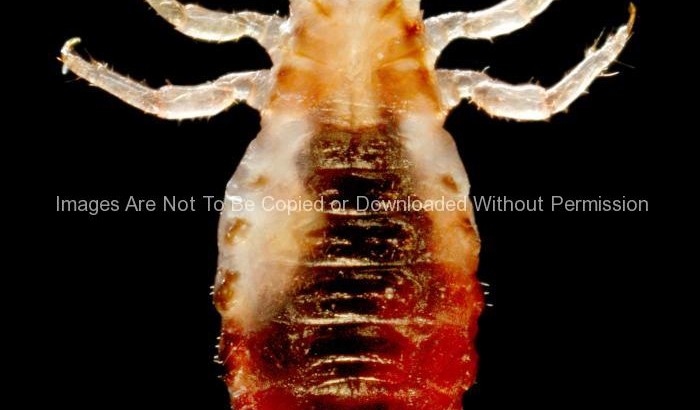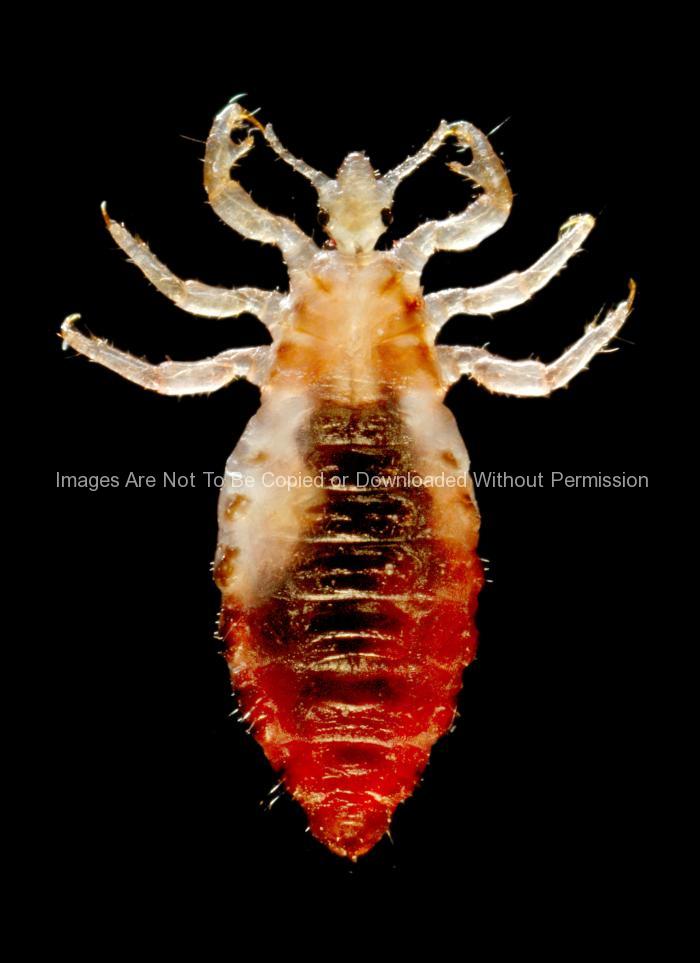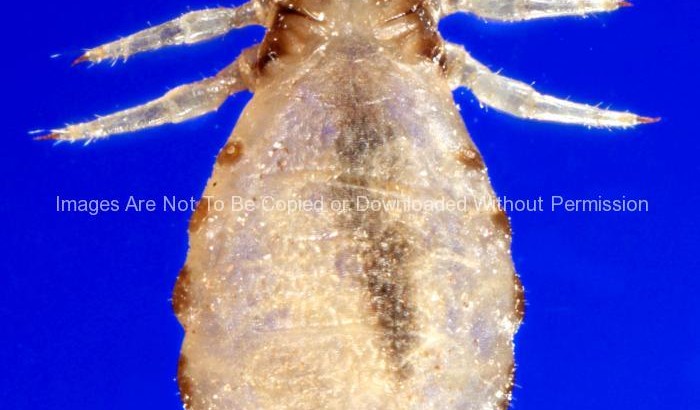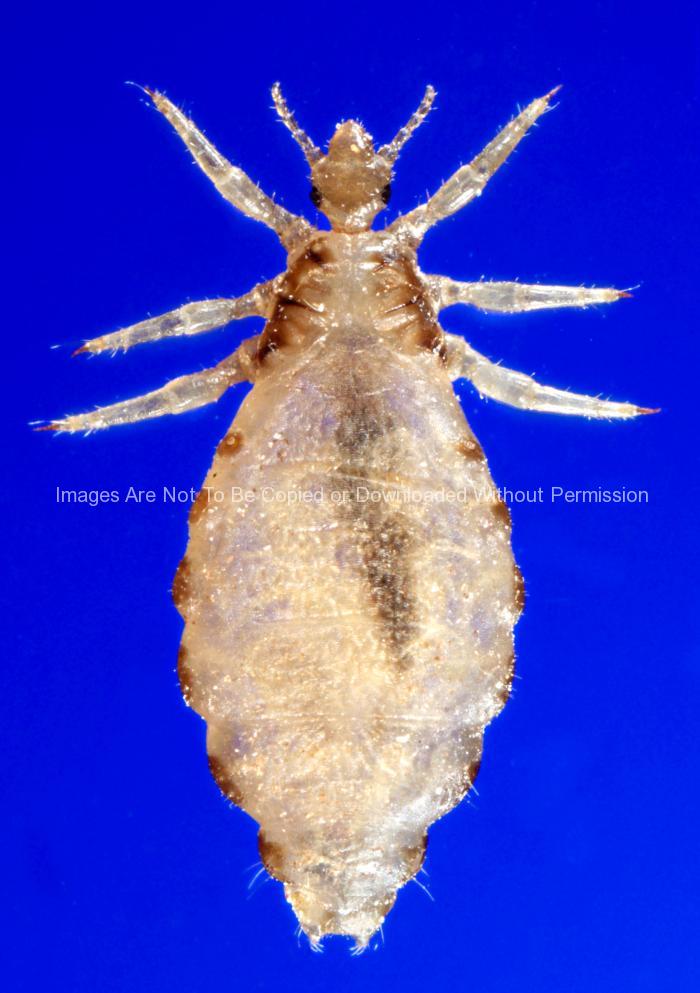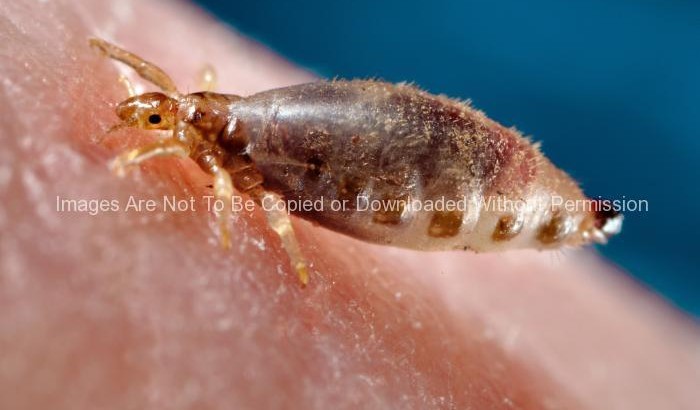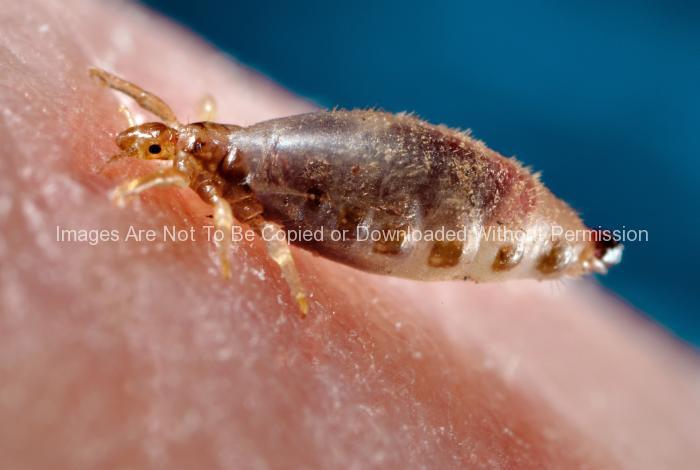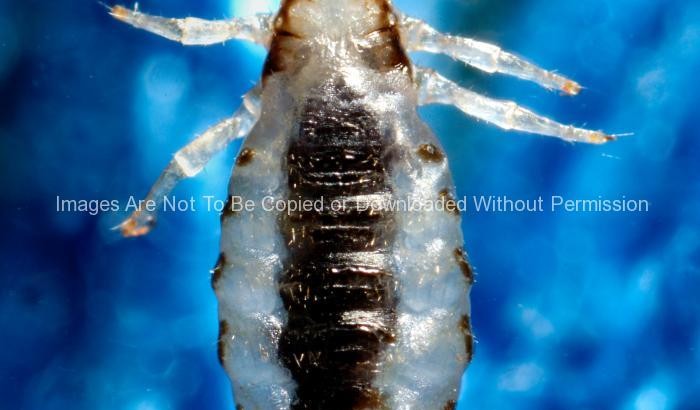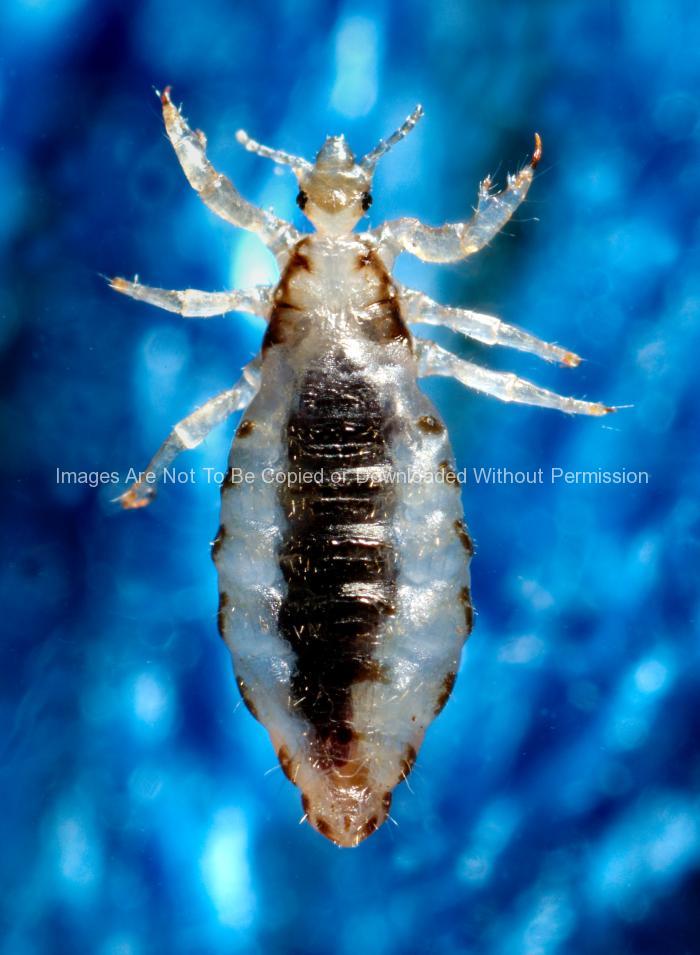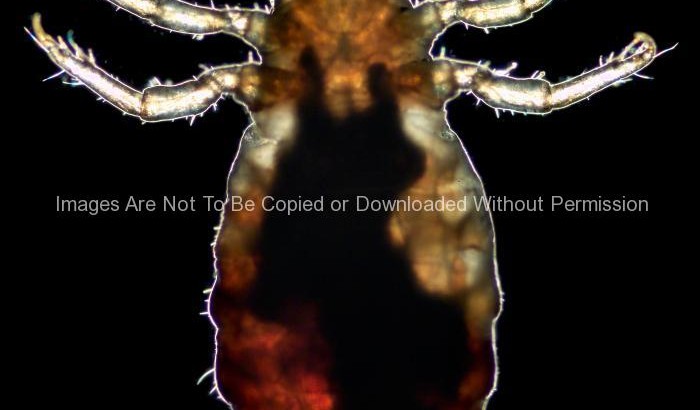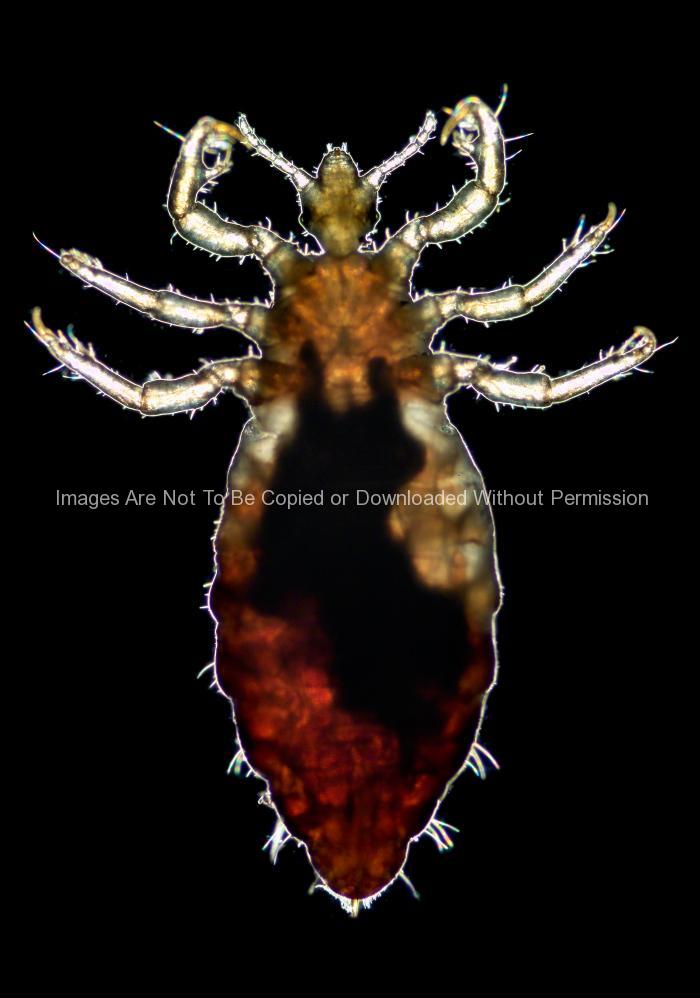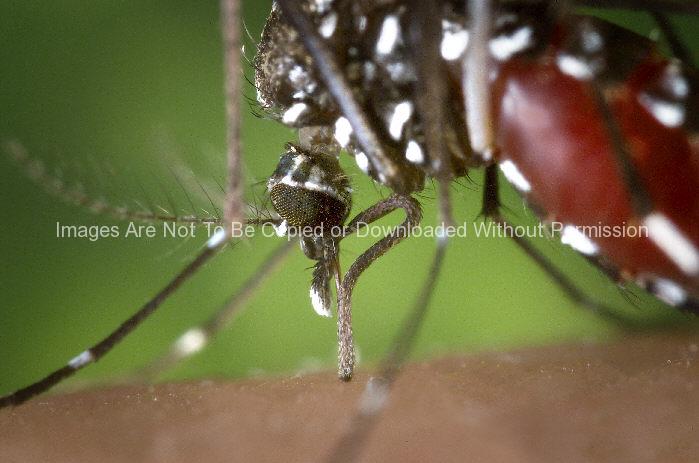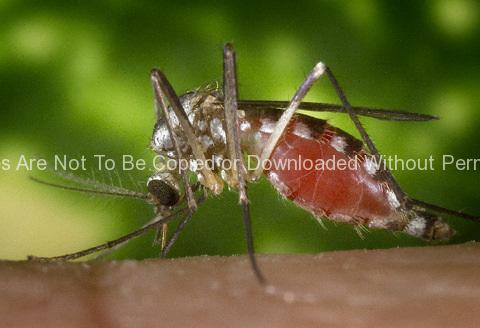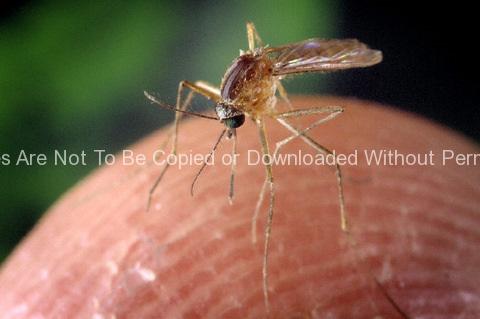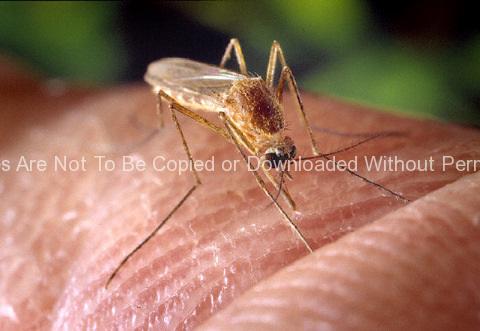This photograph depicts a dorsal view of a male body louse, Pediculus humanus var. corporis. Some of the external morphologic features displayed by members of the genus Pediculus include an elongated abdominal region without any processes, and three pairs of legs, all equal in length and width. The distal tip of the male’s abdomen is rounded, whereas, the female’s is concave.
Body lice are parasitic insects that live on the body, and in the clothing or bedding of infested humans. Infestation is common, found worldwide, and affects people of all races. Body lice infestations spread rapidly under crowded conditions where hygiene is poor, and there is frequent contact among people. Note the sensorial setae, or hairs that cover the louse’s body, which pick up, and transmit information to the insect about changes in its environment such as temperature, and chemical queues. The dark mass inside the abdomen is a previously ingested blood meal.
